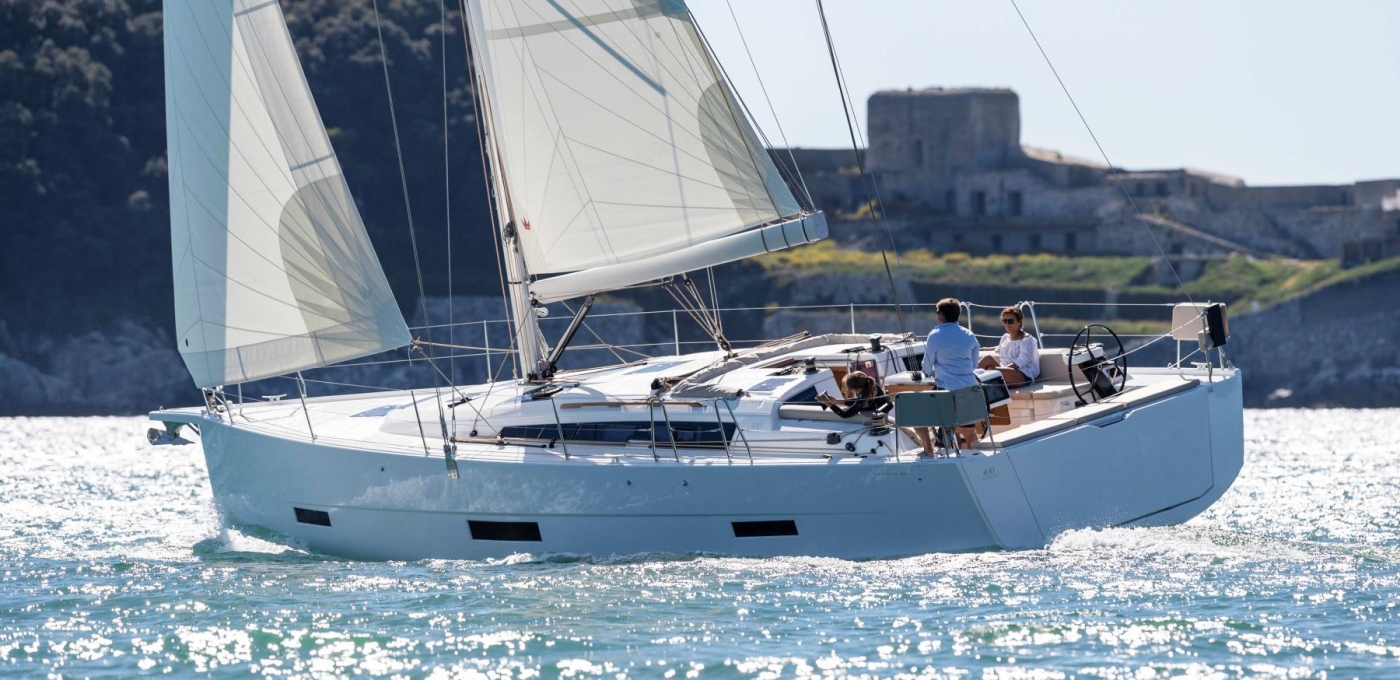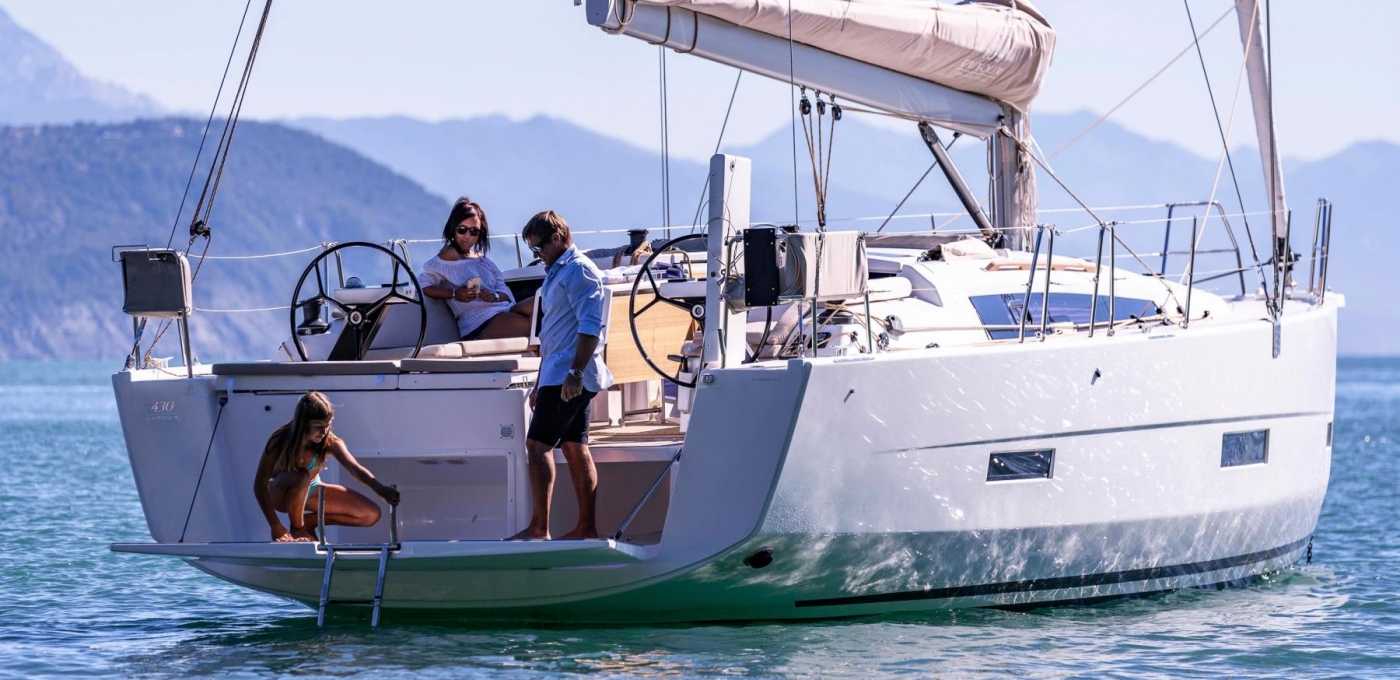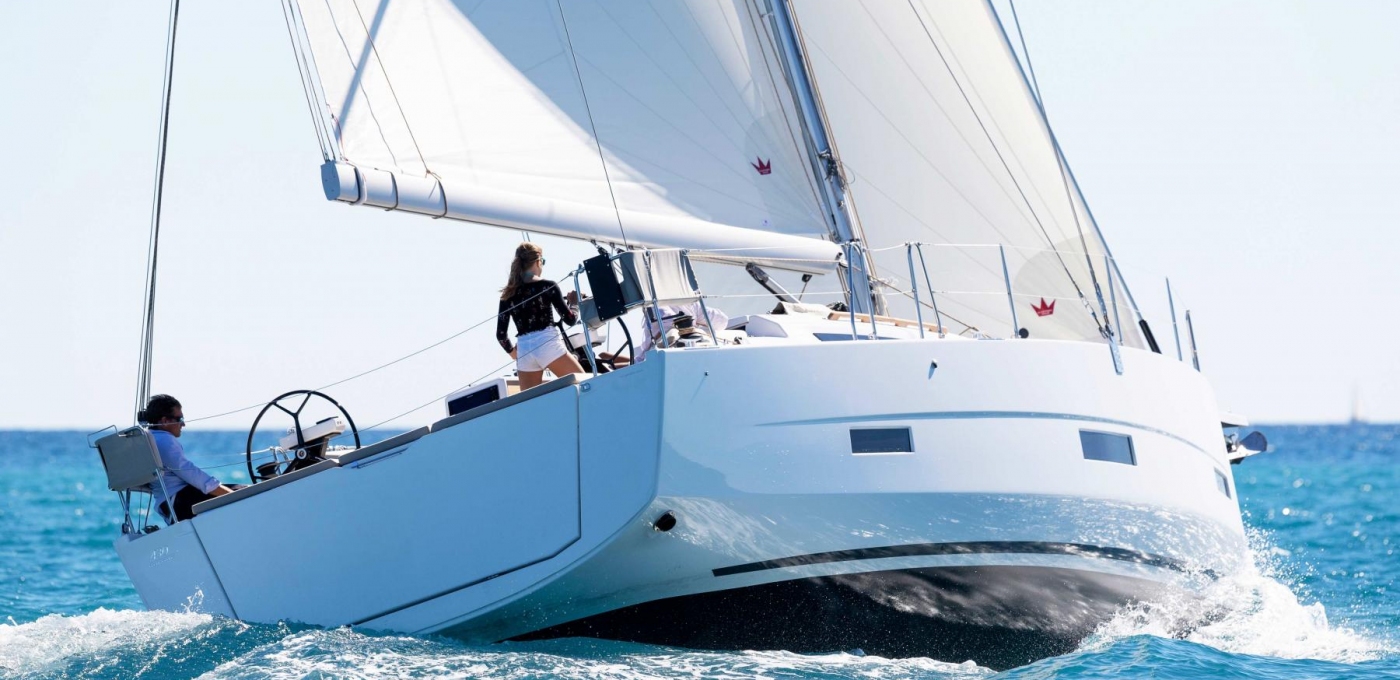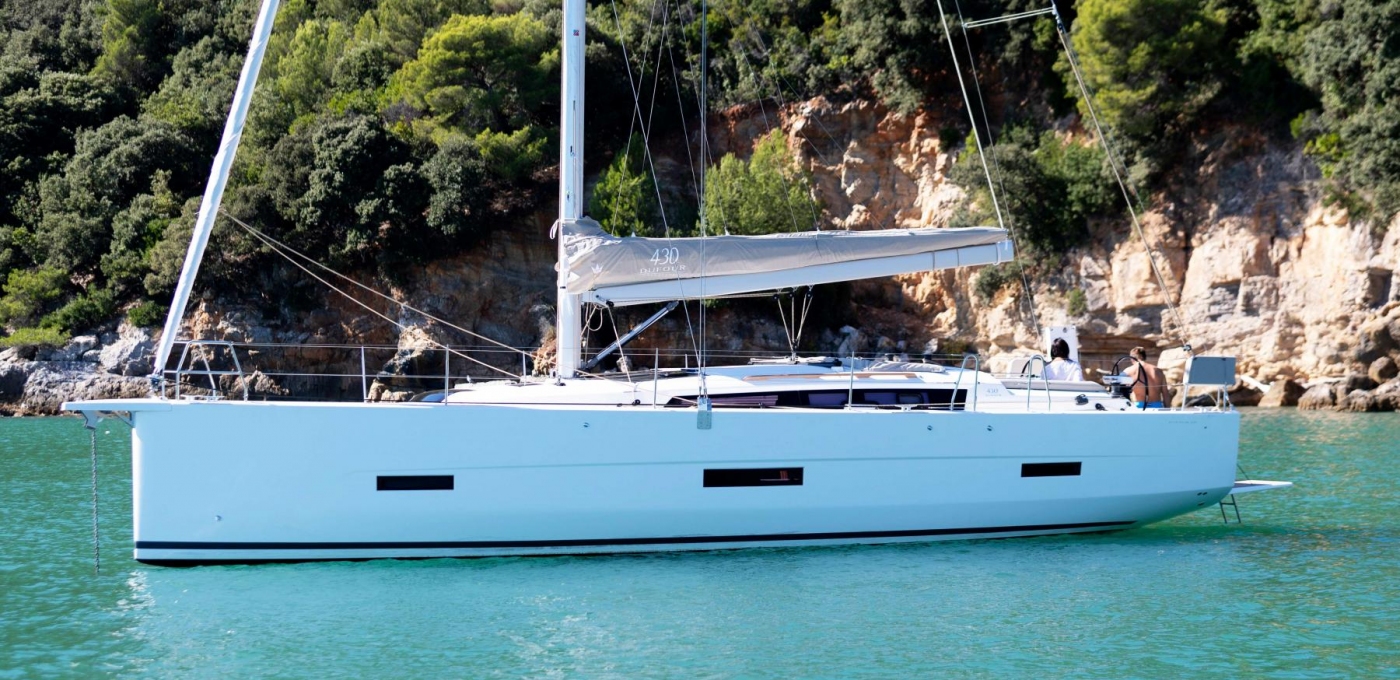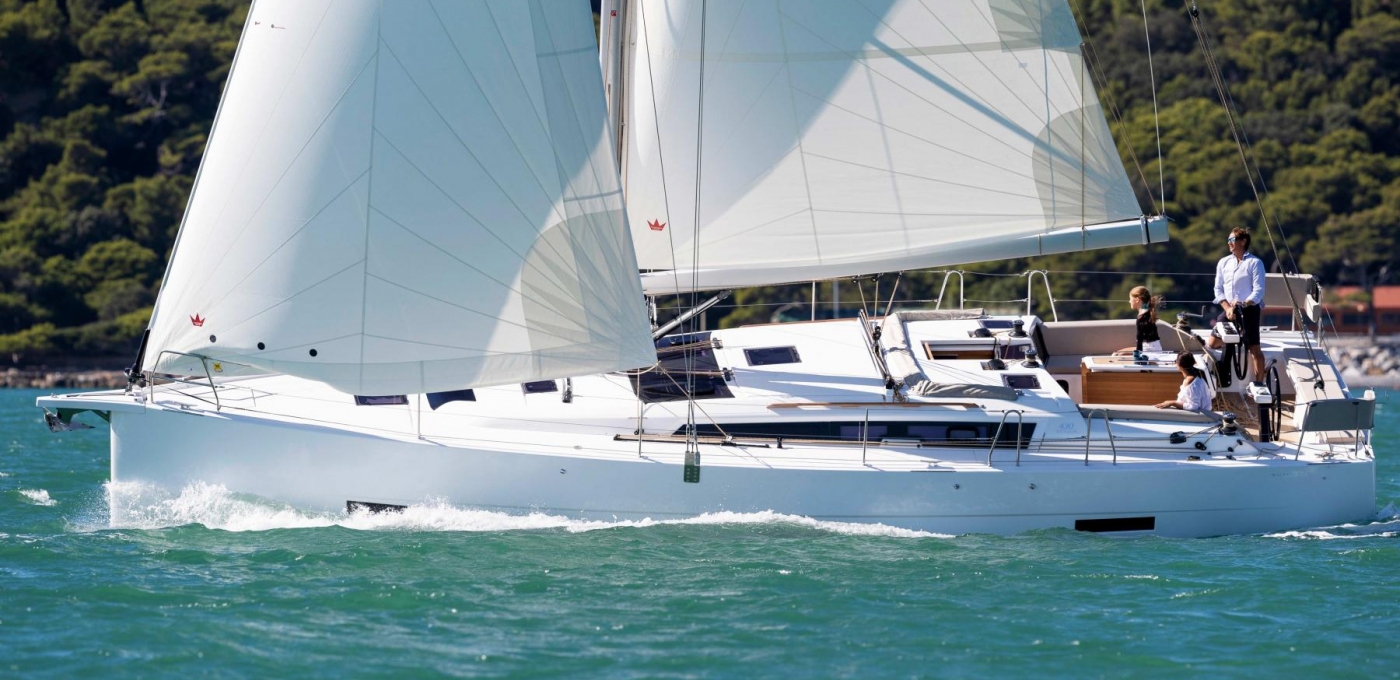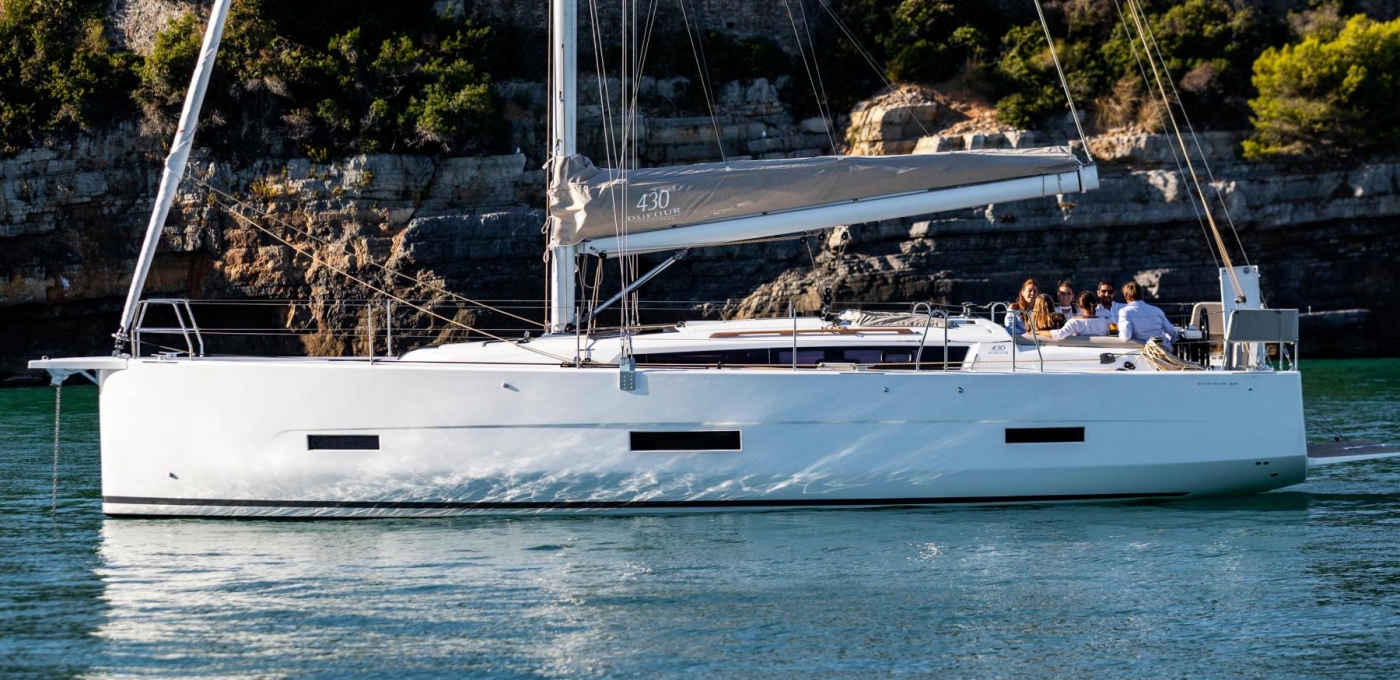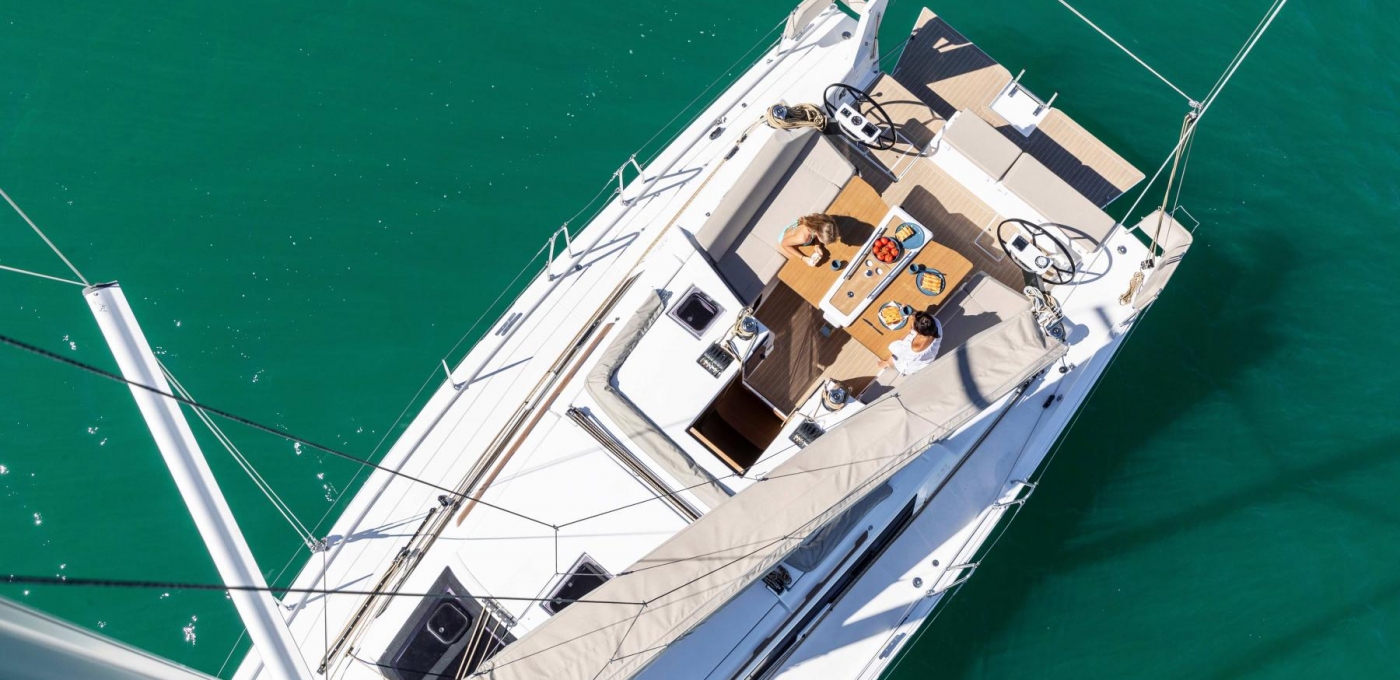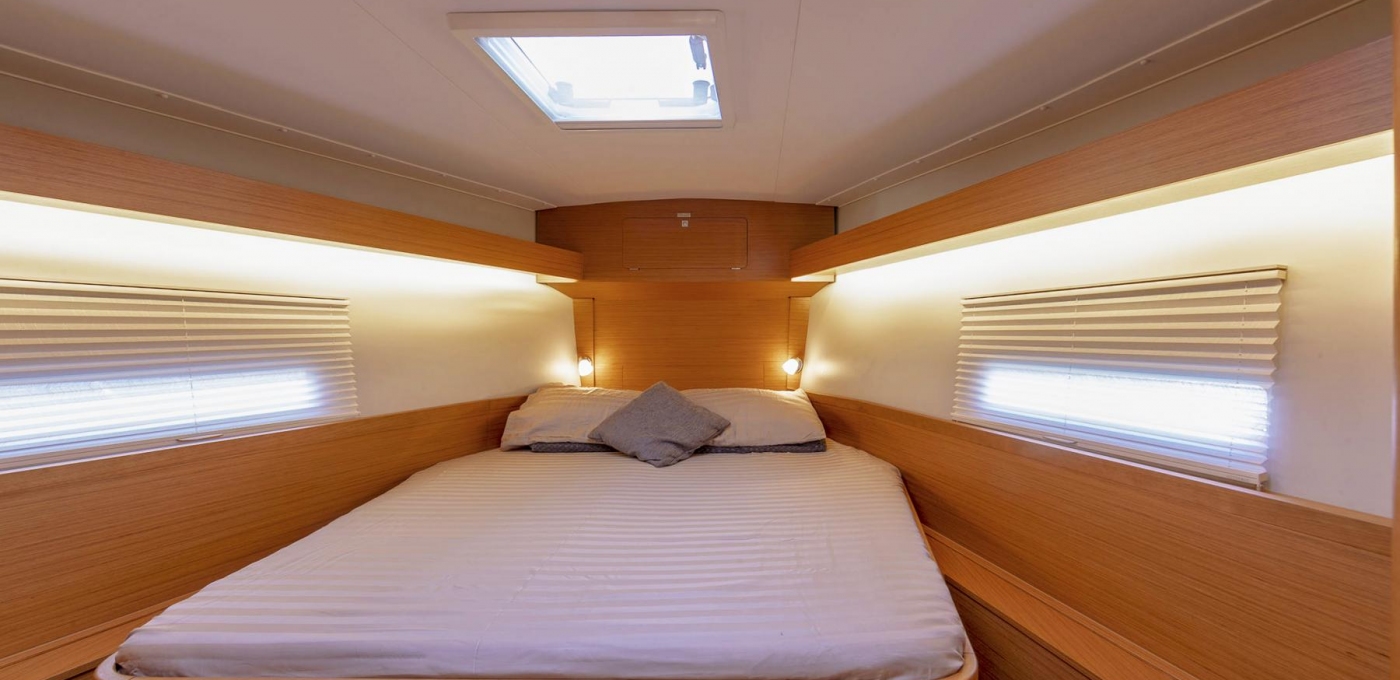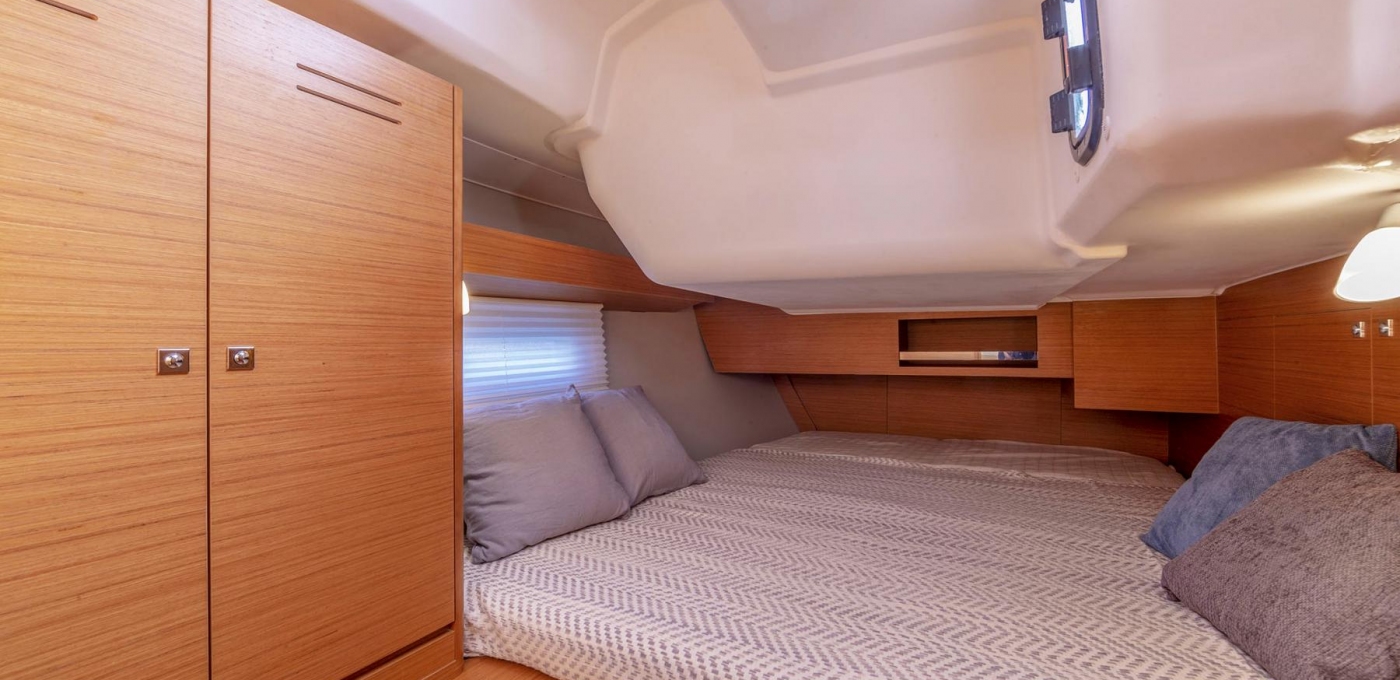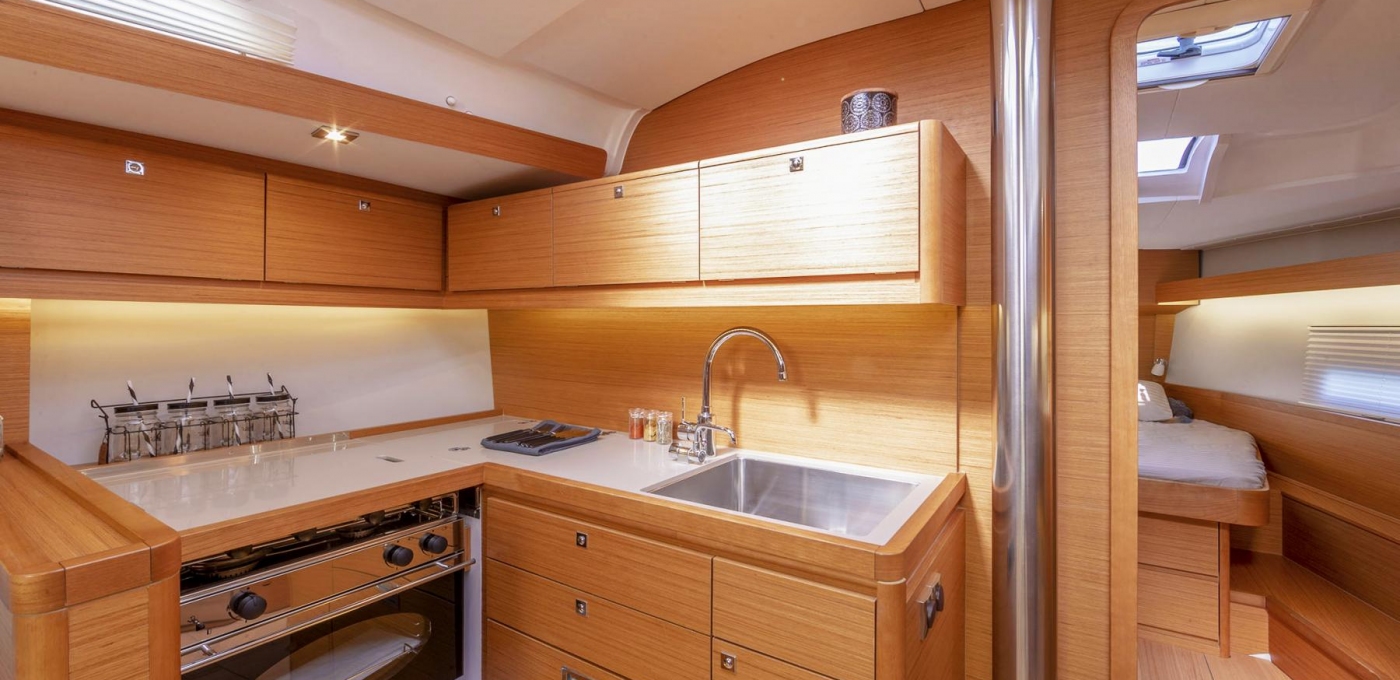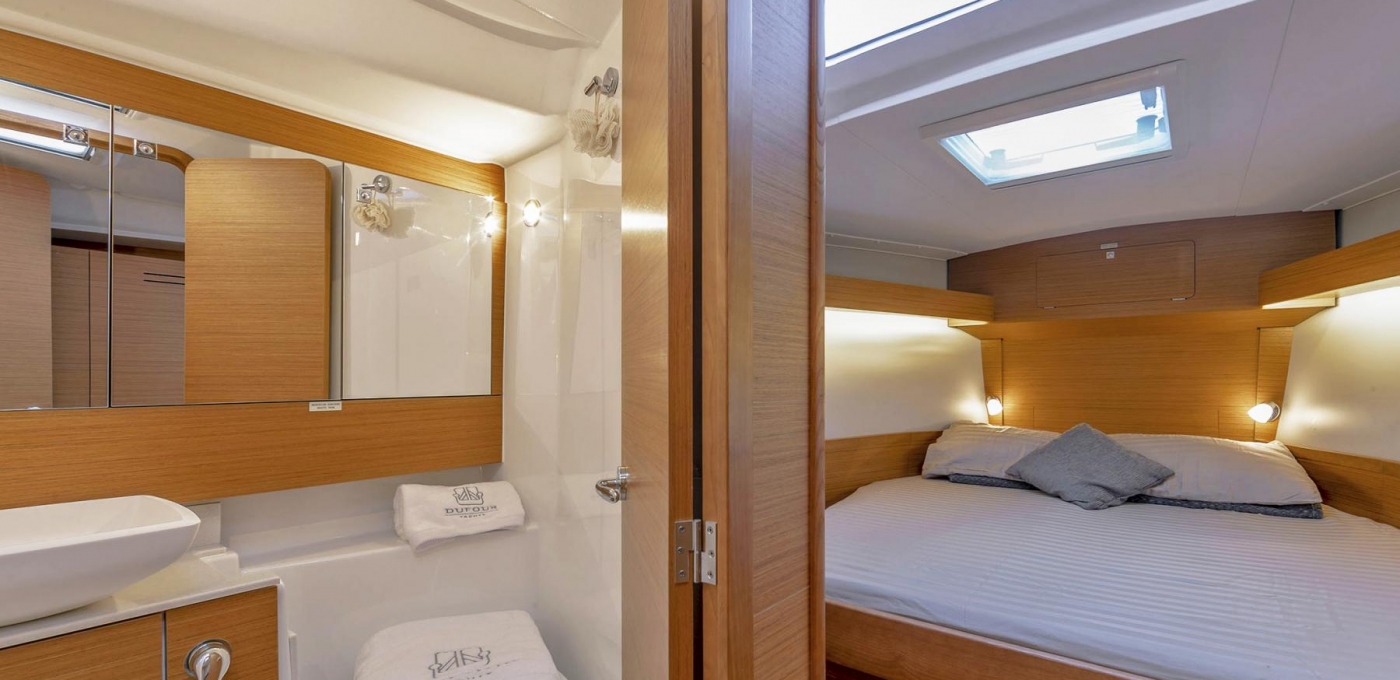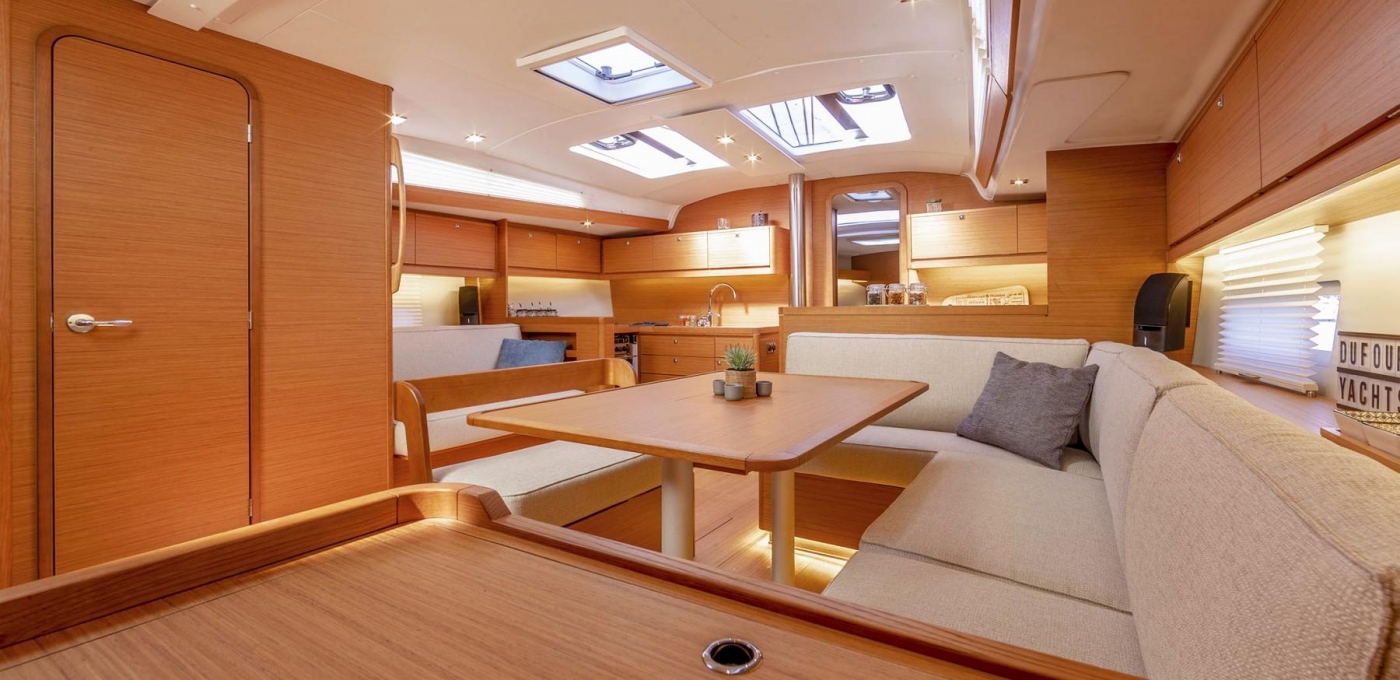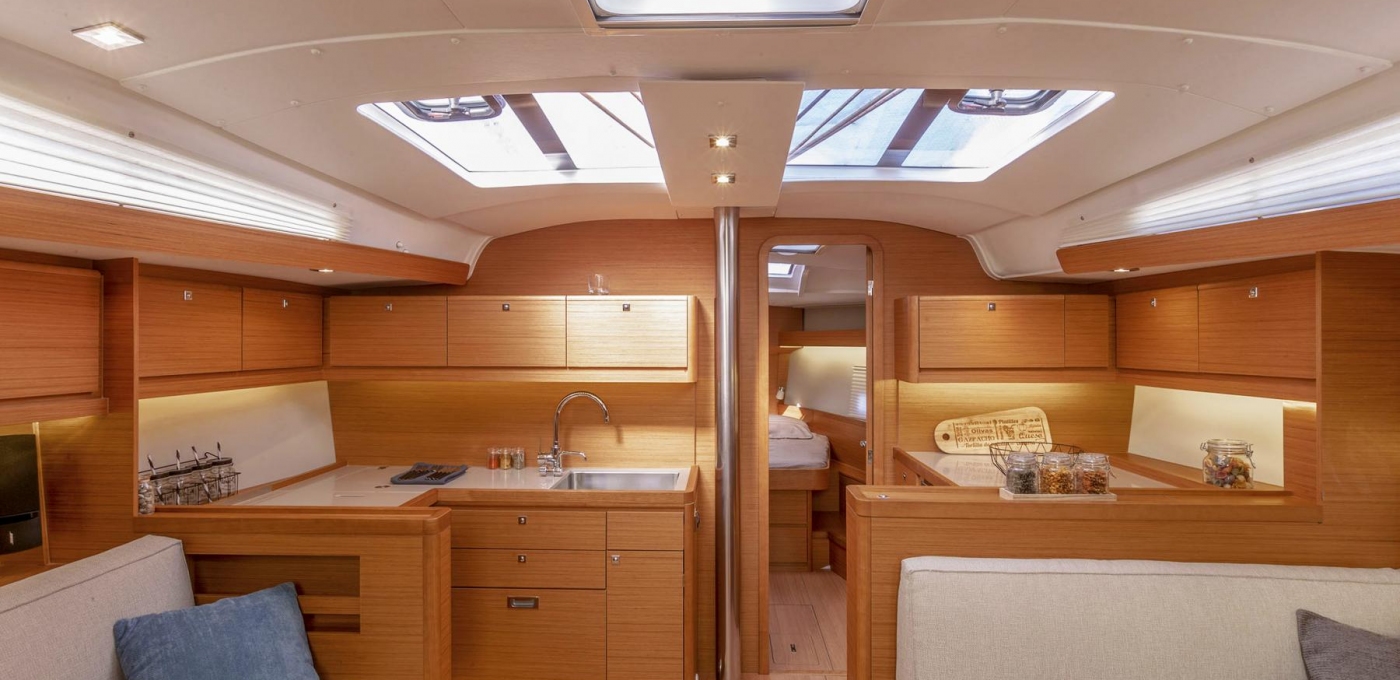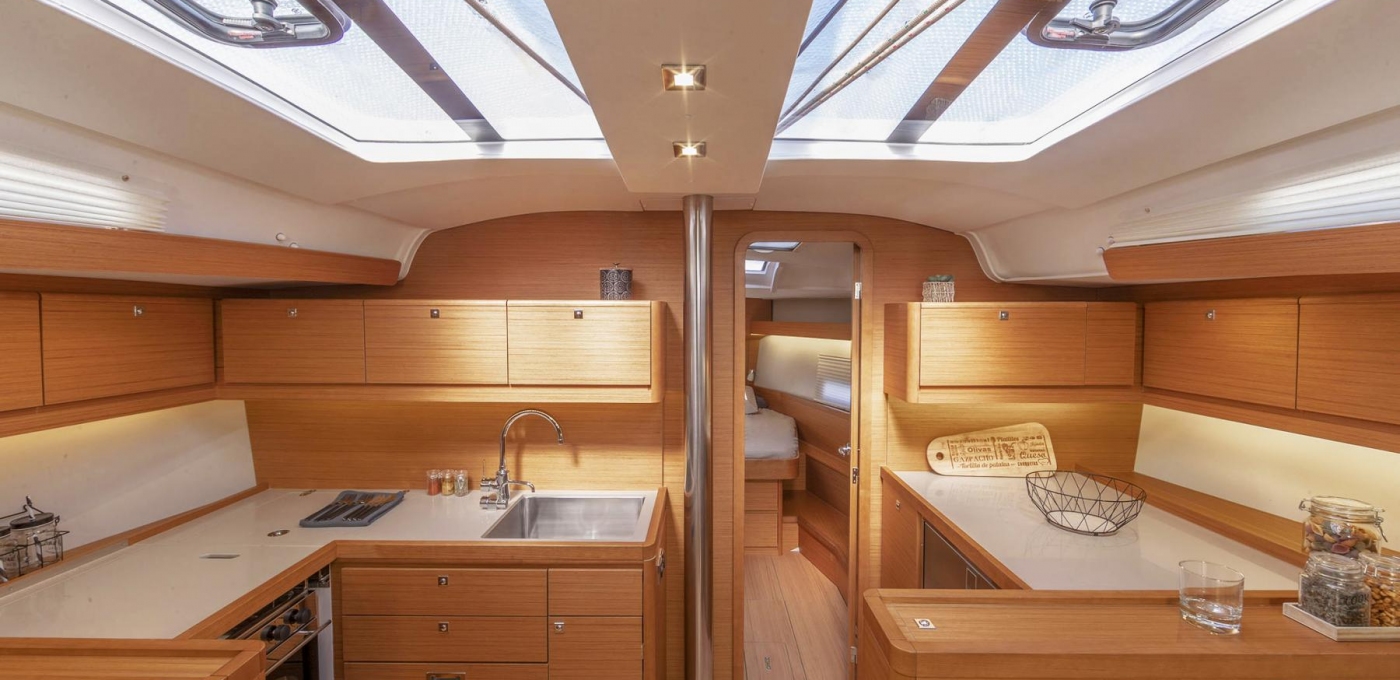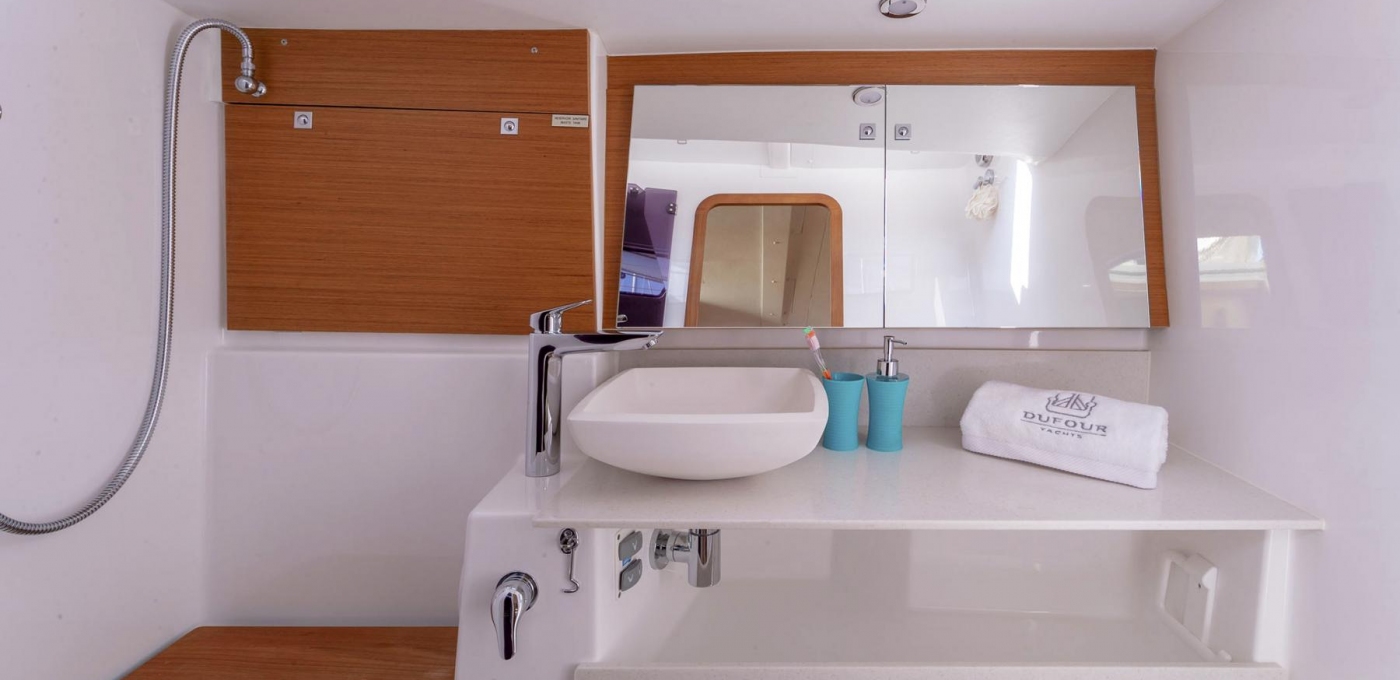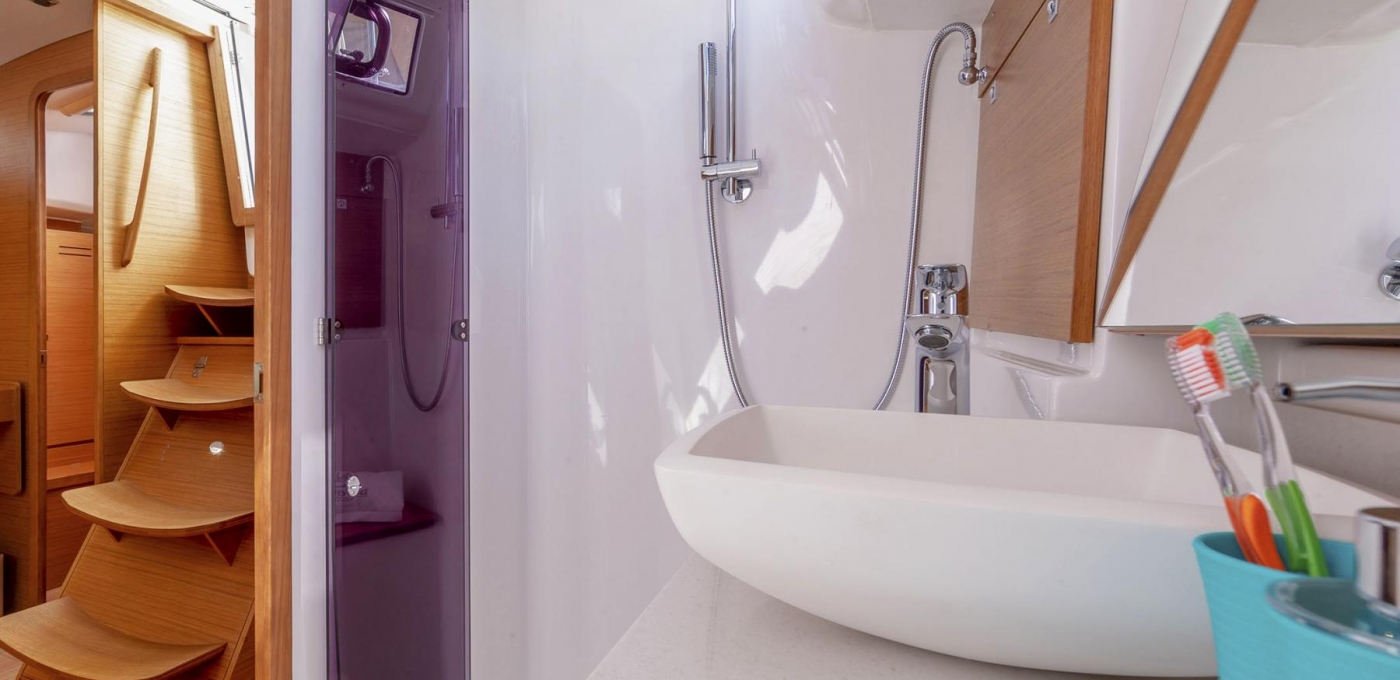We observe the sky from the piers of Porto Lotti to La Spezia: a thin rain falls slightly in oblique moved by a very light breeze from the north, on the horizon not very reassuring temporal. It will be difficult to take photos, but these conditions can still offer interesting insights to try the new Dufour 430 Grand Large, one of the last born of the house. For the launch of the new boat the yard asked the house designer Umberto Felci to introduce some innovations, starting with the water lines renewed compared to the similar measures of the previous generations: a wider and flatter hull, a new rudder fin and more consistent bow volumes. Details that simultaneously make the boat more comfortable and improve its performance in some conditions.
In the light breeze
The north breeze in the Gulf of Poets is disturbed by the humidity of the air and by the disturbed weather, so we decide to head towards the Baia de Le Grazie, a place where a slight breeze in flat water never fails and given the tight spaces can thoroughly test the maneuverability of the boat. The rain becomes beating, and we appreciate the good grip that the deck has in these conditions. At Le Grazie as expected even in these conditions, there is no shortage of air. We unroll the bow and pull the edges into the bay, turning several times and appreciating how the Dufour 430 manages to turn on itself in little space thanks also to the good positioning of the rudder, quite backward. A boat like the 430, pure cruising, must be able to be conducted in a few people, maximum in two, and this is what we can do easily. The maneuvers are in the right place, and we also appreciate the presence of the mainsail on the deckhouse to which Dufour has never given up, not yielding to the fashions of the moment: even if in an advanced position it does its job helping us to optimize the shape of the mainsail in the wind light. The model we tested among other things had a mainsail with a contained leech length, a detail that makes the boom remain high, ideal for cruising, but in this case the work of the transto, coupled with the vang, becomes even more important to optimize the profile of the sail. With 6 knots the boat sails above 3.5 with peaks close to 4, touching and exceeding 4 when the wind reaches 7, all with a real bowline angle of around 50 degrees, useless to tighten more with so little air . Unfortunately we will not see any more of this intensity during our test, but sailboats, even cruising ones, must be able to move even with little wind if they have the ambition to amuse those who buy them, and the 430 in this seems to succeed.
Aesthetics and volumes
Looking at the boat from the outside, while we are taking some pictures despite the rain, we can see that the front volumes are very consistent. A detail that allows it to be a little drier when the wave rises, to sail safely when it has strong wind in the stern, and to have a good internal volume, especially with regard to the foredeck. Speaking of interior volumes: decidedly ample, one has the impression of being on board almost a 45-48 feet, and with an attention to details decidedly increased as we had already seen the rest with all the latest Grand Large models.
VELA magazine 15.02.2019




